Analysis Russian defense industry promotes modern artillery systems on global military market 11312165
|
|
|||
|
Military Defense Industry Technology - Russian artillery systems
|
|||
|
|
|||
| Analysis : Russian defense industry promotes modern artillery systems on global military market. | |||
|
Despite latest defense hardware developments, artillery that was introduced to armies several centuries ago remains 'the god of war' and the backbone of land forces. It drastically facilitates the accomplishing of almost all combat tasks. Therefore, artillery and rocket artillery systems are supposed to be in high demand in the years to come.
|
|||
|
|
|||
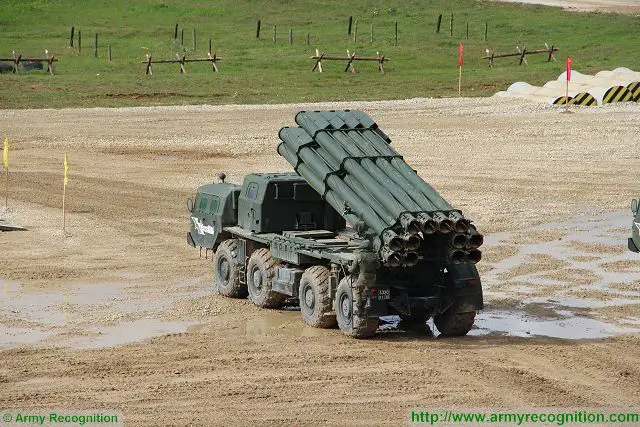 BM-30 Smerch 300mm MLRS (Multiple launch Rocket System) BM-30 Smerch 300mm MLRS (Multiple launch Rocket System) |
|||
|
|
|||
|
Russia`s Rosoboronexport company offers proven, reliable, and combat effective hardware of the aforementioned types to potential foreign customers on the global arms market.
The 300 mm Smerch (Whirlwind) multiple launch rocket system (MLRS) is one of the most powerful rocket artillery platform in the world. The system is intended for engaging enemy`s manpower, soft-skin pieces of hardware, artillery units, helicopters on their landing sites, deployed air defense assets, air- and sea-borne assault teams, command-and-control (C2) posts, etc. The launch vehicle (LV) features an automated laying/fire control system that allows establishing of information and technical interface between the LV and the C2 post; transmitting/receiving of information in automatic mode at high speeds and its visual displaying on the computer screen; laying of the launching tubes from inside the crew cabin; determining of LV position through the medium of satellite navigation hardware. The Smerch MLRS system can use rockets equipped with several types of warheads, including fragmentation sub-munition, anti-tank (AT) mine cluster, high-explosive fragmentation (HE-Frag), thermobaric, HE penetrating, shaped-charged fragmentation, and sensor-fuzed sub-munitions ones. According to the specifications, Smerch has a caliber of 300 mm, a firing range of 25-90 km, a full salvo time of 40 seconds, a time required to change the LV from travel to combat position (and vice versa) of 3 minutes, a maximum road speed of 60 km/h, a cruising range of 850 km, a full weight of 43,700 kg, and a crew of three servicemen. The LV is armed with 12 launching tubes. Rosoboronexport also offers a lightened truck-based variant of the Smerch system that features six launching tubes. It features the similar specifications, while having a full salvo time of 20 seconds, a maximum road speed of 90 km/h, a cruising range of 1,000 km, a full weight of 23,570 kg or 24,650 kg (depending on the type of container), and a crew of two servicemen. The presence of two modifications of the Smerch MLRS systems in the Rosoboronexport's catalogue allows meeting almost all types of requirements for modern rocket artillery. |
|||
|
|
|||
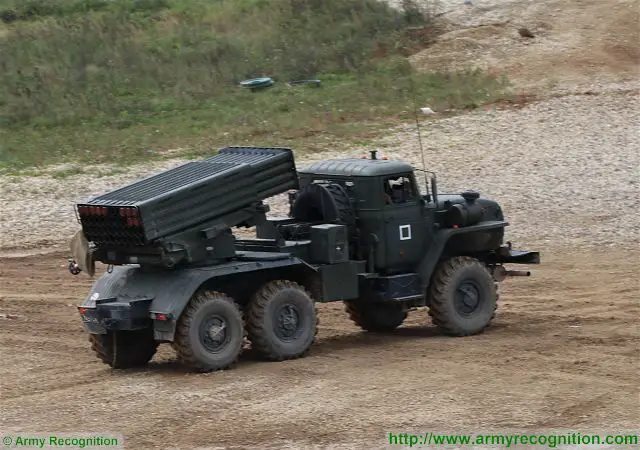 Tordano-G latest generation of BM-21 122mm MLRS (Multiple Launch Rocket System) Tordano-G latest generation of BM-21 122mm MLRS (Multiple Launch Rocket System) |
|||
|
|
|||
|
The company also offers the proven and reliable 122 mm Grad MLRS system that is believed to be one the most effective rocket weapons in the world. Grad is intended for engaging enemy`s manpower, soft-skin targets, light armoured vehicles, artillery/rocket artillery/mortar batteries, C2 posts, ammunition depots, etc.
The Grad LV features an automated laying and fire control system that allows firing from an unsurveyed position; laying of the launching tubes from inside the crew cabin and without using the aiming points; reducing of time of staying on firing position; preparing initial firing data. According to Rosoboronexport`s catalogue, Grad has a maximum firing range of 40 km, a full salvo time of 20 seconds, a full weight of 15,020 kg, and a crew of two servicemen. The system features 40 launching tubes. Grad can be based on the Ural wheeled trucks. |
|||
|
|
|||
 2S19 MSTA-S 152mm self-propelled howitzer 2S19 MSTA-S 152mm self-propelled howitzer |
|||
|
|
|||
|
The company also pays a significant attention to the promoting of Russian-originated self-propelled artillery on the global arms market. The 152 mm Msta-S self-propelled gun (SPG) remains the central piece of Rosoboronexport`s SP barrel artillery portfolio. The SPG features an automated laying and fire control system, that allows displaying the information for vehicle`s crew, processing the individual corrections introduced by commander, storing the received information in memory, calculating initial firing data in indirect firing mode, etc. Msta-S is intended for the engaging of enemy`s manpower, weapon systems, and other types military hardware. According to the specifications, the SPG has a firing range of 6-29 km, an ammunition load of 50 rounds, a firing rate of 8 rounds per minute, an elevation angle between -3° and +68°, a traverse angle of 360°, a maximum speed of 60 km/h, a cruising range of 500 km, a weight of 42 t, and a crew of five servicemen. Msta-S can cross a trench of 2.8 m and a vertical obstacle of 0.5 m.
Rosoboronexport also offers the upgraded Akatsiya SPG to potential foreign customers. The self-propelled gun is equipped with an automated laying and fire control system. Akatsiya is intended for engaging enemy`s manpower and military hardware. According to the specifications, the SPG has a firing range of 4.2-20.5 km, a firing rate of 4 rounds per minute, an elevation angle between -4° and +60°, a traverse angle of 360°, an ammunition load of 46 rounds, a weight of 27.5 t, and a crew of four servicemen. |
|||
|
|
|||
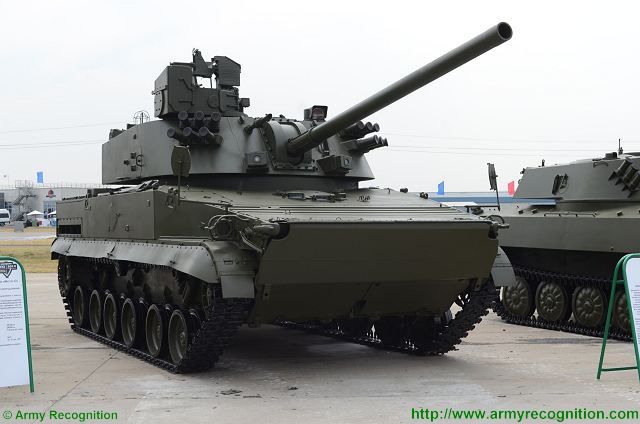 2S31 Vena 120mm self-propelled mortar carrier on tracked armoured. 2S31 Vena 120mm self-propelled mortar carrier on tracked armoured. |
|||
|
|
|||
|
The 2S31 Vena SPG is intended for engaging enemy`s manpower, hardware, C2 posts, and armoured vehicles. The self-propelled gun allow quick fire concentration to engage selected targets. Vena features a high level of the gun automation, enhanced performance of the integrated equipment, and the increased reliability of communications systems.
The 2S31 SPG is equipped with a 120 mm gun, HE rounds of which do not fall short of their 122 mm or 152 mm analogues in terms of effective area. The gun also features a high accuracy of fire. According to the specifications, Vena has a firing range of 0.4-13 km, a firing rate of eight to 10 rounds per minute, an ammunition load of 70 rounds, an elevation angle between -4° and +80°, a traverse angle of 360°, a maximum speed of 70 km/h, a cruising range of 600 km, a weight of 19.5 t, and a crew of four servicemen. In initial configuration, the SPG is based on the chassis of the BMP-3 infantry fighting vehicle (IFV). |
|||
|
|
|||
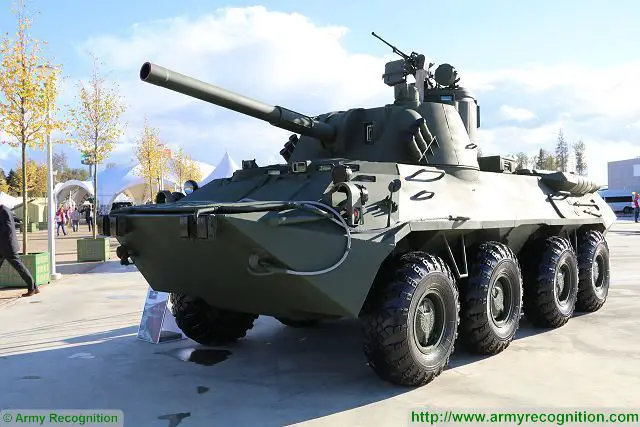 Nona-SVK 120mm wheeled self-propelled mortar carrier Nona-SVK 120mm wheeled self-propelled mortar carrier |
|||
|
|
|||
|
Rosoboronexport offers the 120 mm Nona-SVK SPG to potential foreign customers. It is designed to destroy and suppress enemy`s manpower, artillery and mortar batteries, armoured targets, C2 posts, etc. The system features a 120 mm breech-loading rifled gun installed in a welded turret that is mounted on the chassis of the BTR-80 vehicle. It can deliver both direct and direct fire by artillery projectiles and mortar shells. According to the specifications, Nona-SVK has a firing range of 0.48-12.5 km, a firing rate of 10 rounds per minute, an elevation angle between -4° and +80°, an ammunition load of 30 rounds, a weight of 14.5 t, and a crew of four servicemen.
Russia`s company promotes a range of towed artillery platforms that have retained their combat effectiveness in the SPG and MLRS era. Towed gun seems to be a relatively inexpensive and cost-effective approach to the increasing of infantry units` firepower capabilities. |
|||
|
|
|||
 D-30A 122mm towed howitzer D-30A 122mm towed howitzer |
|||
|
|
|||
|
The 122 mm D-30A howitzer is an updated variant of the world-known D-30. The D-30A is intended for destroying and suppressing of enemy`s manpower, hardware, engineering installations, engaging enemy`s artillery and mechanized units, and breaching the minefields and barbed wire-protected areas.
The howitzer is complemented by a three-frame carriage that enables all-around firing. According to the specifications, D-30A has a firing range of 4-15.3 km, a firing rate of six to eight rounds per minute, an elevation angle between -7° and +70°, a traverse angle of 360°, a weight of 3,200 kg (in combat position), and a crew of six servicemen. |
|||
|
|
|||
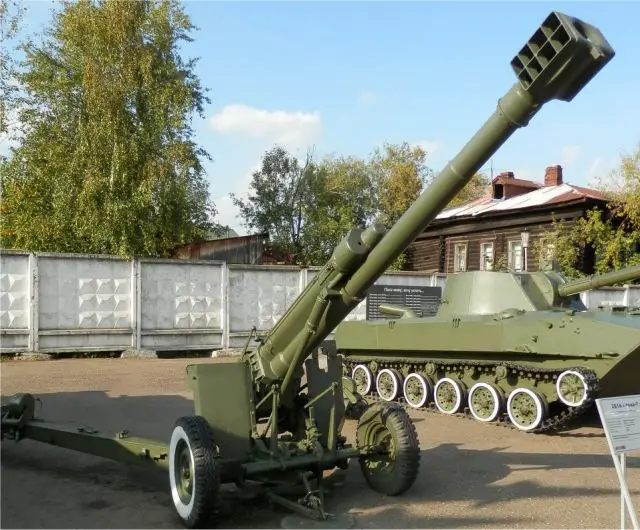 Nona-K 120mm towed howitzer Nona-K 120mm towed howitzer |
|||
|
|
|||
|
Rosoboronexport offers the 120 mm Nona-K towed gun that is intended for engaging of enemy`s manpower and military hardware in the nearest tactical area. The combined breech-loading rifled gun can deliver both direct and indirect fire. It can fire both artillery projectiles and mortar shells. The gun`s barrel features a muzzle brake, unlike the self-propelled variant. According to the specifications, the Nona-K towed gun has a maximum firing range of 8.8 km (for artillery projectiles) or 7.1 km (for mortar shells), an elevation angle between -10° and +80°, a traverse angle between -30° and +30°, a firing rate of eight rounds per minute, an ammunition load of 60 rounds, a weight of 1.2 t, and a crew of five servicemen. It can be towed by a UAZ-469 all-terrain car or similar utility vehicles.
Russia`s company also promotes the Nona-M1 towed rifled semi-automatic breech-loading mortar. It is intended for engaging enemy`s manpower, materiel, mortar batteries, engineering installations and for providing of fire support to motorized rifle units. The mortar can be dismantled into four pieces for comfortable carrying or installation on various vehicles. According to the specifications, the Nona-M1 mortar has a caliber of 120 mm, a firing range of 450-12,800 m, a maximum firing rate of nine (for artillery projectiles) or 11 (for mortar shells) rounds per minute, a weight of 507 kg, and a crew of five servicemen. |
|||
|
|
|||
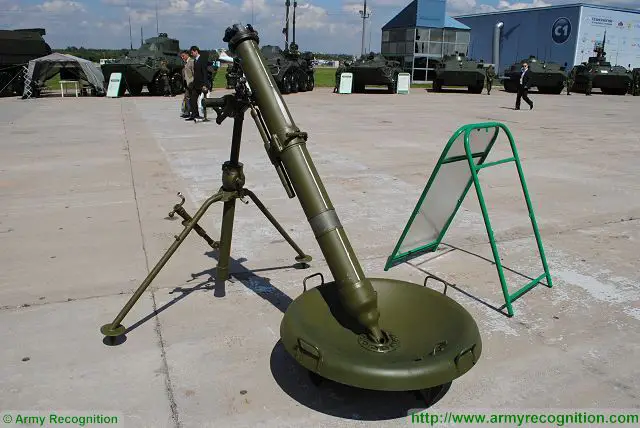 Sani 120mm mortar Sani 120mm mortar |
|||
|
|
|||
|
Rosoboronexport`s towed mortars portfolio also includes the 120 mm Sani system. It is intended for engaging of enemy`s manpower and military equipment. According to the specifications, the Sani mortar has a firing range of 480-7,100 m, a maximum firing rate of 10 rounds per minute, an elevation angle between 45° and 80°, a traverse angle between -5° and +5° (without bipod relocation) and of 360° (with bipod relocation), a weight of 230 kg (in combat position), and a crew of five servicemen.
|
|||
|
|
|||
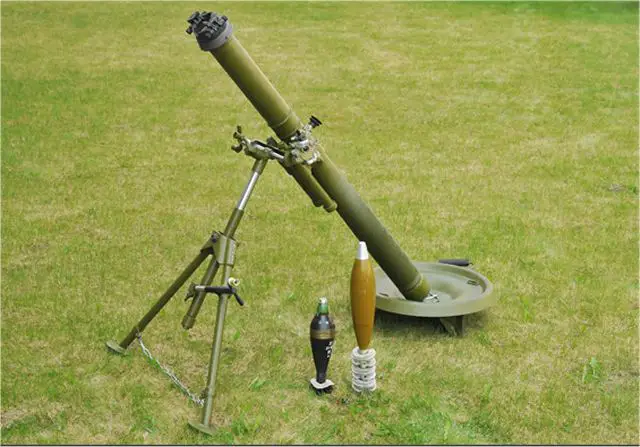 2B24 82mm mortar 2B24 82mm mortar |
|||
|
|
|||
|
The 82 mm 2B24 mortar is also in Rosoboronexport`s mortars portfolio. The mortar is designed to suppress and destroy enemy`s manpower and weapon systems. It should be noted that 2B24 features enhanced maneuverability and combat effectiveness. The mortar can be installed on various types of wheeled or tracked chassis. According to the specifications, 2B24 has a firing range of 100-6,000 m, a firing rate of 20 rounds per minute, a weight of 45 kg, and a crew of five servicemen.
|
|||
|
|
|||
 2B14 Podnos 82mm mortar 2B14 Podnos 82mm mortar |
|||
|
|
|||
|
The company also offers the 82 mm Podnos muzzle-loaded mortar. It is designed to engage enemy`s manpower and materiel. According to the specifications, the Podnos mortar has a firing range of 0.08-4.02 km, a firing rate of 24 rounds per minute, an elevation angle between 45° and 85°, a traverse angle of 8° (without bipod relocation) and of 360° (with bipod relocation), a weight of 42.6 kg (in combat position), and a crew of five servicemen.
|
|||
|
|
|||
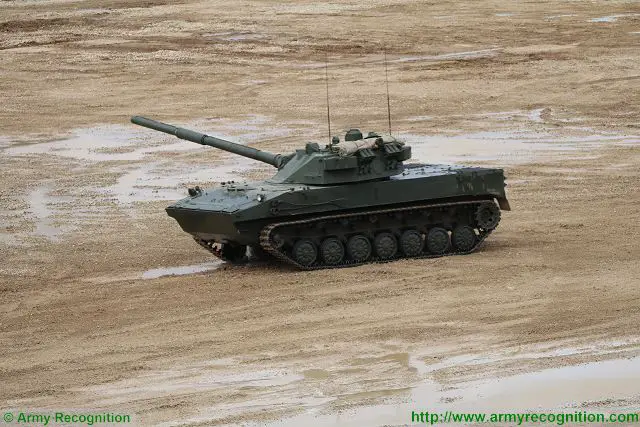 2S25 Sprut-SD 125mm tracked armoured self-propelled anti-tank gun 2S25 Sprut-SD 125mm tracked armoured self-propelled anti-tank gun |
|||
|
|
|||
|
Rosoboronexport promotes the 125 mm Sprut-SD self-propelled anti-tank gun (SPATG). It is intended for destroying of enemy`s tanks, SPGs, armoured personnel carriers (APC), and other mobile and static targets. The system can also engage manpower and weapon systems. The Sprut-SD SPATG is an armoured combat vehicle that is armed with an effective missile/gun system. It can be carried by transport airlifters and landing ships. The system is an amphibious one.
Sprut-SD can also be used as a light tank. According to the specifications, the Sprut-SD SPATG is armed with a 125 mm smoothbore stabilized automatically loaded cannon that has a firing rate of seven rounds per minute and an ammunition load of 40 rounds. The SPATG features a 7.62 mm PKT coaxial machinegun with an ammunition load of 2,000 rounds. Sprut-SD has a maximum road speed of 71 km/h, a maximum swimming speed of 10 km/h, a road cruising range of 500 km, a combat weight of 18 t, and a crew of three servicemen. |
|||


























